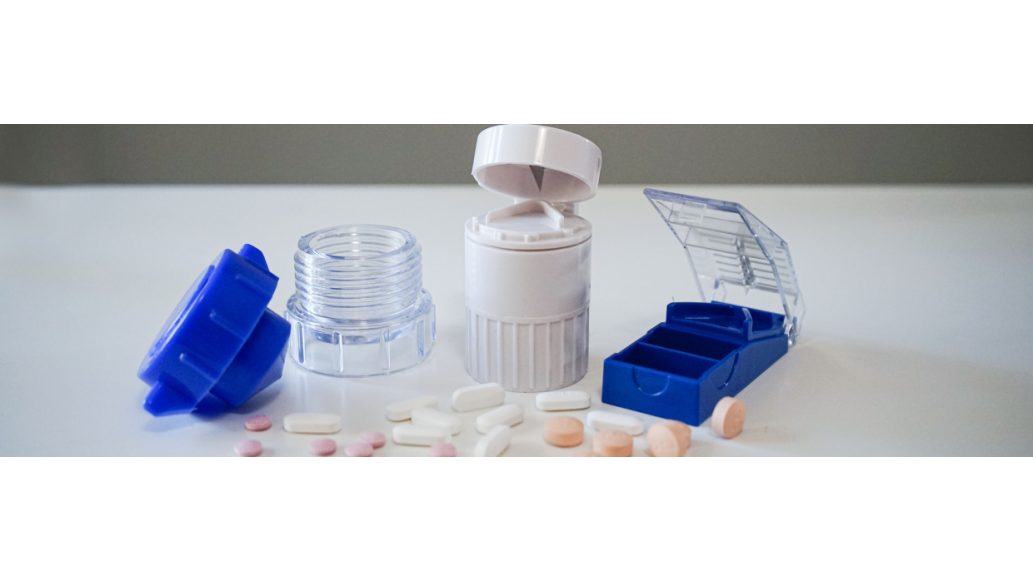Key Takeaways
- The easiest way to follow Joint Commission standards is to provide each patient with a pill-splitter and/or crusher to reduce cross contamination among patients
- Hospitals are required to safely prepare medications according to Joint Commission Standard: MM.05.01.07
- Performance Health offers high-quality pill-splitters that are constructed for safe and accurate cutting
Joint Commission Standard
Benefits of a Single Patient Use Pill Splitter
Best Practices and Protocols for Pill-Splitting
Risks When Pill-Splitting Without a Designated Device
Single-Use Pill-Splitter Solutions for You
Joint Commission Standard
While utilizing pill-splitters or crushers is beneficial in a hospital and other environments, there are also risks for using such a device. These risks include cross-contamination of different drugs, especially if there is not a cleaning procedure between different patients or drugs.1 This article will help break down the best practices of using a pill-splitter device to follow Joint Commission Standard: MM.05.01.07, which explains how to safely prepare medications.
MM.05.01.07 gives standards for who should be administering medications and pharmacy airflow. Sections EP1 and EP2 listed under the standard focus on how to use a pill-crusher safely to avoid cross-contamination.2

Benefits of a Single Patient Use Pill Splitter
Utilizing a single-use pill splitter for medications has a variety of benefits. Not only can it help patients physically who have difficulty swallowing a whole tablet, it can also help you save money from an economic standpoint. This is due to some insurance providers only covering a higher strength tablet that is twice the amount of dosage needed per pill for a patient.3
Utilizing a single-use pill splitter instead of multi-use pill-splitters or crushers also helps avoid a variety of risks, like allergic reactions, that we will discuss later in this article.
Best Practices and Protocols for Pill-Splitting
To ensure the safety of a patient, there are protocols and practices that help mitigate the risk of cross-contamination or a medication error. These practices include washing your hands before pill splitting and ensuring the pill-splitter is sterile.4 It is also suggested to review if the medication can be split, as not all should be. A good frame of reference to help determine if a pill can be split is if there is a score on the pill. However, it is always best to review the medication instructions even if there is a score suggesting a medication can be split.5
Risks When Pill-Splitting Without a Designated Device
There are multiple ways pill splitting can go wrong if you do not use a designated device. A common risk includes receiving an uneven dose due to how it is crushed or crumbled, as well as wasting medication that should have been taken by a patient. For example, if you try to split pills using a knife, a patient could receive an uneven dose. There is also a chance the surface area used was not sterilized correctly before crushing a pill.4
When pill-splitting between patients, there is a chance that residue from a previous patient’s medication can stay on the device. This can lead to someone taking another medication included with theirs that they might be allergic to or have a reaction to due to taking it with their own medication. It also takes time for you to properly disinfect the splitter between patient use. Using one pill splitter/crusher per patient helps you increase patient safety and save time.5
Single-Use Pill-Splitter Solutions for You
Performance Health offers a variety of high-quality single-use pill-splitting devices to help you adhere to the standards of the Joint Commission. Constructed for safe and accurate cutting, some of these are single-use devices that just cut pills. Others offer the ability to hold the pills until it is time to crush them, helping you or the patient store and split medications effectively.
Summary
In order to best prepare for a survey by the Joint Commission, you will want to ensure you are following their standards. The easiest way to do so is to provide each patient with their own pill-splitter and/or crusher. This will lower the risk of cross contamination and allow each patient to utilize their own device after leaving the care facility.
Top Products in this Article
Resources
- Dussart, Claude et al. “Safety Evaluation of Individual Pillboxes to Control Cross-Contamination in the Drug Circuit in Hospitals.” International journal of environmental research and public health vol. 16,20 3878. 13 Oct. 2019, doi:10.3390/ijerph16203878
- “Medication Administration - Incorporating Patient Preference Into Medication Administration Practices.” The Joint Commission, 8 Aug. 2022. https://bit.ly/3dgkHHl
- Janet Lubman Rathner. “When Splitting Pills, Beware of Risks.” Laborers’ Health & Safety Fund of North America, 8 Aug. 2022. https://bit.ly/3QanX5s
- “Is It Safe to Split Pills?” Cleveland Clinic, 8 Aug. 2022. https://cle.clinic/3QabezJ
- “Tablet Splitting: Do It Only If You “Half” To, and Then Do It Safely.” Institute for Safe Medication Practices, 8 Aug. 2022. https://bit.ly/3P1Qkl6
Medical Disclaimer: The information provided on this site, including text, graphics, images, and other material are for informational purposes only and are not intended to substitute for professional medical advice, diagnosis, or treatment. Always seek the advice of your physician or other healthcare professional with any questions or concerns you may have regarding your condition.








 France
France Australia
Australia






